Bell pepper (Capsicum annum) is one of the most coveted garden vegetables that pair well with other crops in the kitchen and garden. It is also a warm-season annual when grown in temperate regions. Bell peppers are considered “sweet” since they lack the pungent chemical (capsaicin) in hot peppers.
Bell peppers are more challenging than other crops and need a long growing season of up to 90 days. You can plant bell peppers directly in the ground, in raised garden beds, or a large pot. When cared for properly, they’ll produce more peppers all year long.
30 Bell Pepper Companion Plants
Bell pepper companion plants has benefits in pest control, fertilization, and disease prevention.
1. Basil

Basil is a popular summer herb and a great bell pepper companion plant, and these two plants have similar growth habits and temperature preferences. Basil loves hot weather and sunshine just as much as bell peppers, and it grows in a stout bushy habit that won’t shade out or invade your pepper plants if kept at a 12″ distance.
Benefits: Growing basil next to bell peppers boosts their flavor, helps to repel garden pests such as aphids, spider mites, thrips, mosquitoes, and flies, boosts pollination, and improves yields.
How To Plant: Direct seed or transplant basil a week after you plant your peppers. Ensure you leave about 10-12″ from your bell pepper plants.
2. Chamomile
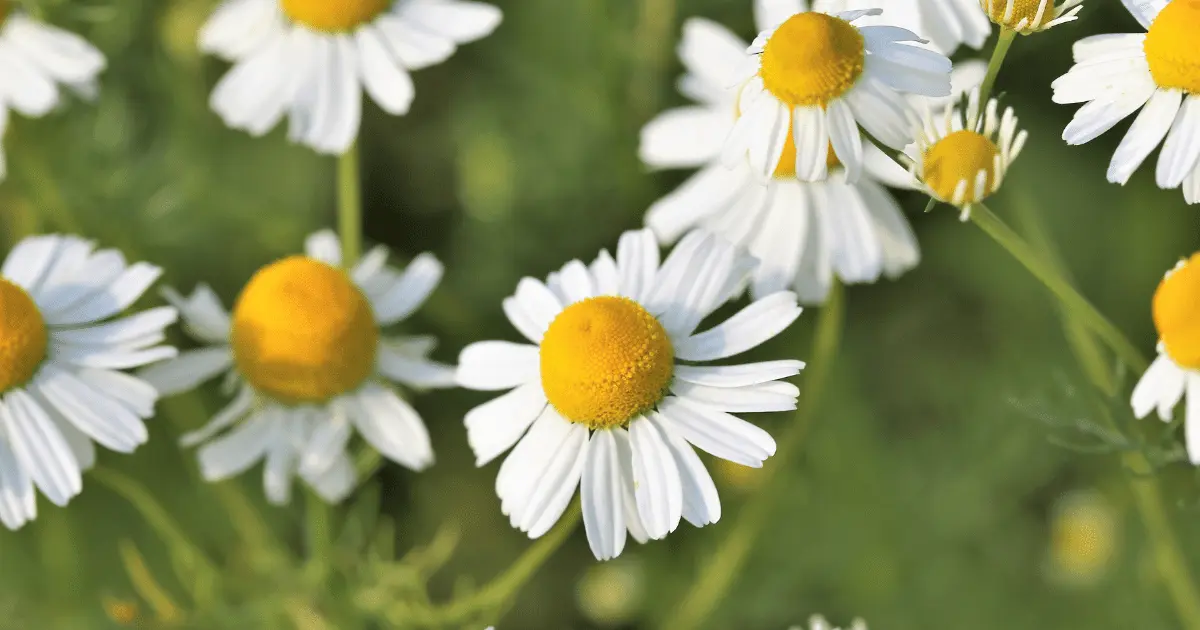
Chamomile is a medicinal and aromatic herb. The plant belongs to the daisy family, and the flowers have a characteristic herbaceous fragrance. When planted in the garden, chamomile attracts beneficial insects, hoverflies, and predatory wasps.
Benefits: Chamomile attracts beneficial insects and pollinators
How To Plant: Plant chamomile while you plant bell peppers. Chamomile can grow relatively tall, so it’s best to plant them on row beds, raised beds, or herbal border beds.
3. Parsley

Parsley is commonly known as an Italian herb in curly and flat-leaf types. Growing parsley around your bell pepper plant provides shade and cover for bare soil.
Benefits: Parsley blossoms attracts predatory insects such as wasps and hoverflies. These insects feast on pests like aphids, thrips, and other harmful bugs that may attack your pepper plants.
How To Plant: Plant parsley at least 12 feet away from the bell pepper plant.
4. Marigolds
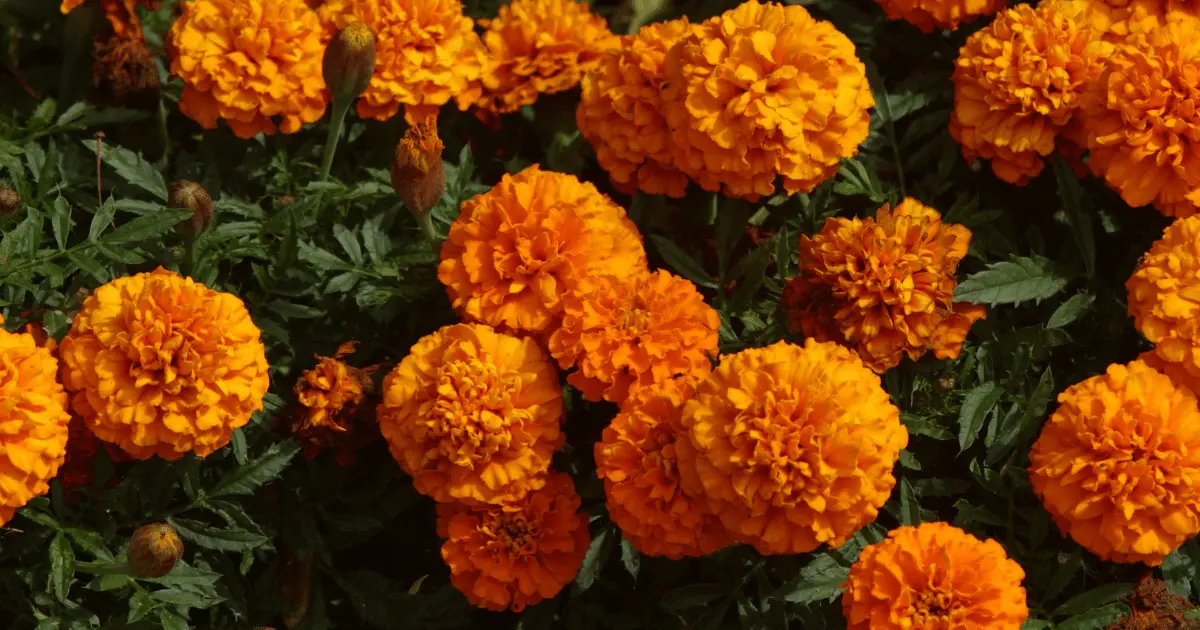
Marigolds, also known as crucial flowers of Dia De Los Muertes celebrations, are among the most loved flowers that are great companions to many crops. The flowers can increase fruit yield and reduce the number of pests. Marigolds come in various colors and sizes, but the best variety to plant is the French marigolds because they are shorter and more compact.
Benefits: Marigolds have a strong pest-deterring fragrance to keep aphids, nematodes, whiteflies, and other bugs away.
How To Plant: Plant marigolds a few feet throughout your pepper patch while transplanting pepper seedlings. Provide 12-18 feet of space between the crops.
It is advisable to plant the French marigold if you are low on space. However, if you prefer the larger Mexican marigolds, keep them on the margins of the bell pepper beds to prevent shading or competition.
5. Marjoram

Marjoram is another excellent companion plant that won’t compete for space with your bell pepper plants. Marjoram is commonly used as a spice in Italian seasoning blends. Although it isn’t as spicy as oregano, it has a strong citrus aroma that deters flies, thrips, and aphids.
Benefits: Marjoram deters pests and attracts beneficial predators as well as pollinators.
How To Plant: Plant marjoram in the corners of raised beds or bordering perennial herb beds. Marjoram reaches its maximum height of around 12 to 24 feet but can spread up to 18 feet wide. Therefore, you must give marjoram plenty of space away from your pepper plant.
6. Beets
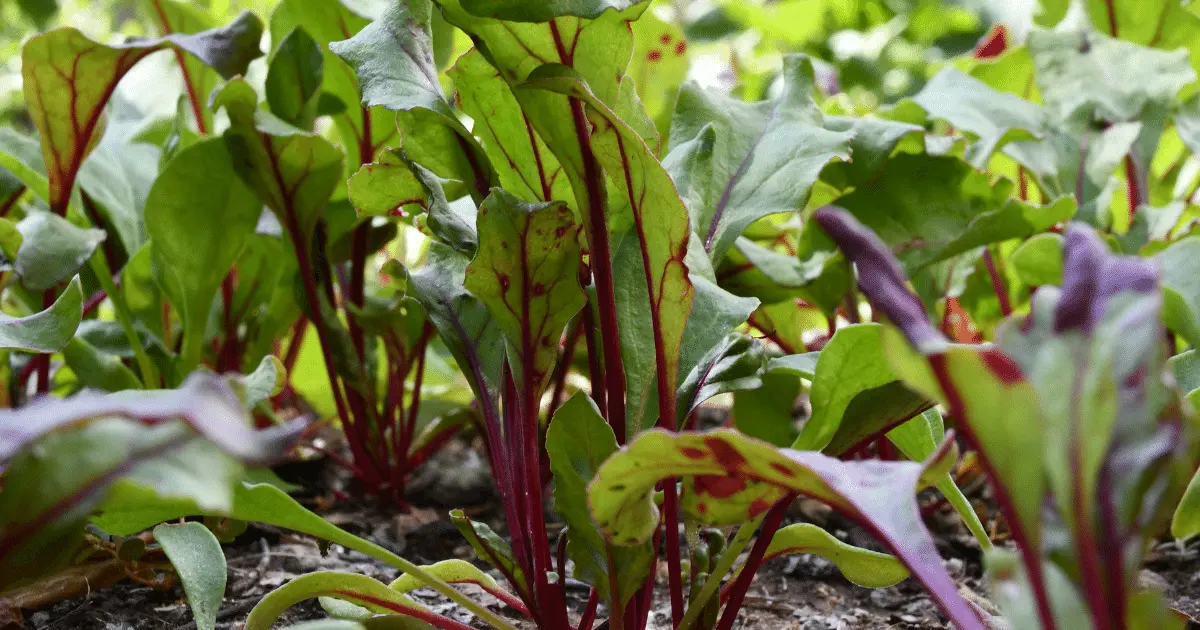
Beets are edible greens that loosen the soil while adding additional yields to a small growing space. They can mature in 50 days, which means they will be ready to harvest when bell pepper plants begin to take off.
Benefits: Beets add biodiversity, loosen the soil and maximize space. It also helps to fill in space in the garden and shade out weeds while helping to keep the soil moist.
How To Plant: Plant beets 6 feet from the base of your bell pepper plant.
7. Radishes
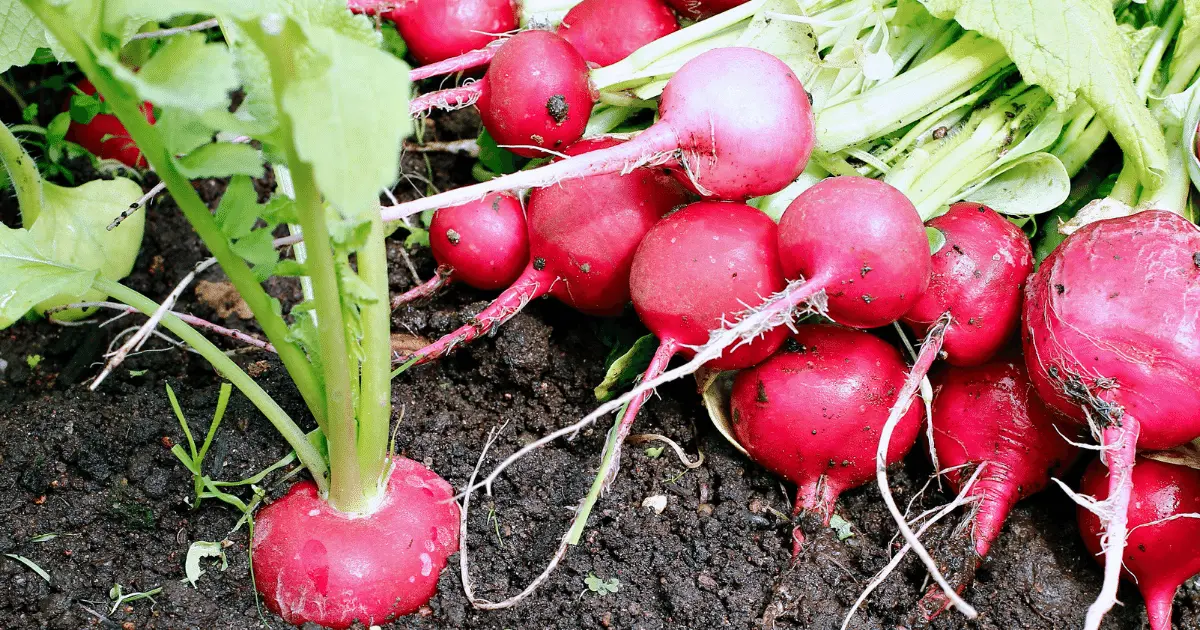
Radishes are one of the common beginner gardener crops because they are extremely easy and quick to grow. They are excellent companion plants for almost any garden because they come in small sizes and can fill in gaps in the garden.
Benefits: Radishes deter pests and maximize space.
How To Plant: Sow bell pepper plants 6-8″ from the base of radish plants. Remember to provide even irrigation for both crops.
8. Tomatoes
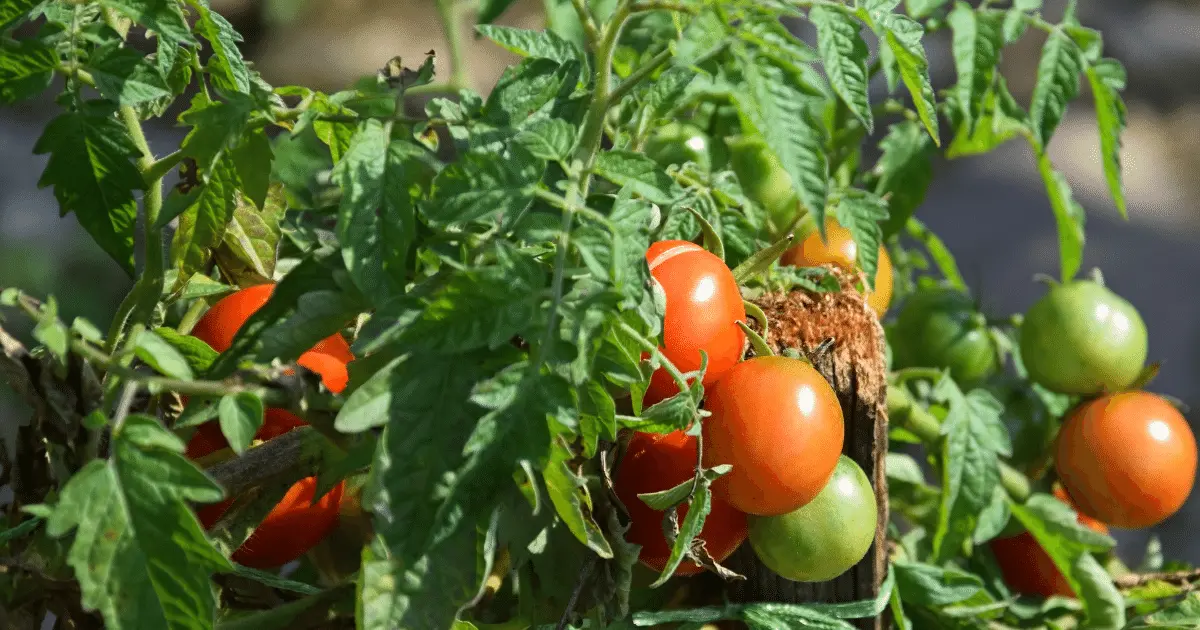
Tomatoes are excellent companions for bell pepper because they enjoy the same conditions. They can be planted in the same garden, but remember to rotate them to a different area in the successive growing season, so they don’t pass on overwintering pathogens.
Benefits: Tomatoes maximize space and yield and provide partial shade.
How To Plant: Maintain at least 24″ space between both crops.
9. Garlic
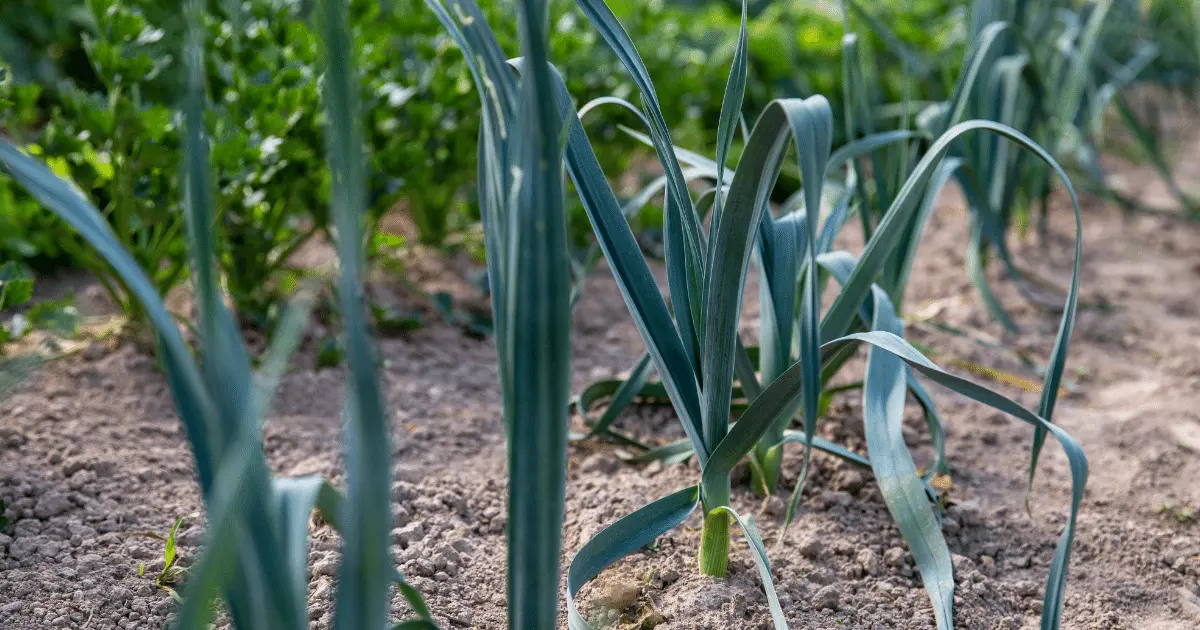
Garlic is one of the popular allium-family favorites that can be used in every cooking cuisine. Aside from being popular, garlic is an excellent bell pepper companion plant as it helps to repel or deter aphids and certain beetles from taking over the peppers.
Benefits: Garlic repels pests and maximizes garden space for better yields.
How To Plant: Garlic can be planted in the fall and harvested in the summer. This means you can grow your garlic seed while your bell peppers are rounding up their first round of fruiting before the cold sets in.
10. Baby Greens
Baby greens are young greens specifically enjoyed for their juicy, flavorful texture. Thanks to their small size and relatively minimal soil, space, and light requirement, baby greens can be grown in a wide range of conditions and are well-suited for container and indoor gardening.
Benefits: When planted with parsley, baby greens maximize space and biodiversity.
How To Plant: You can plant 6-12″ baby greens from bell pepper plants in a row or clump. When they are about 6″ tall, harvest them by grasping a handful in your palm and cutting at the base. Then leave a couple of inches of stem at the bottom to encourage re-growth for a second harvest 1-2 weeks later.
11. Borage
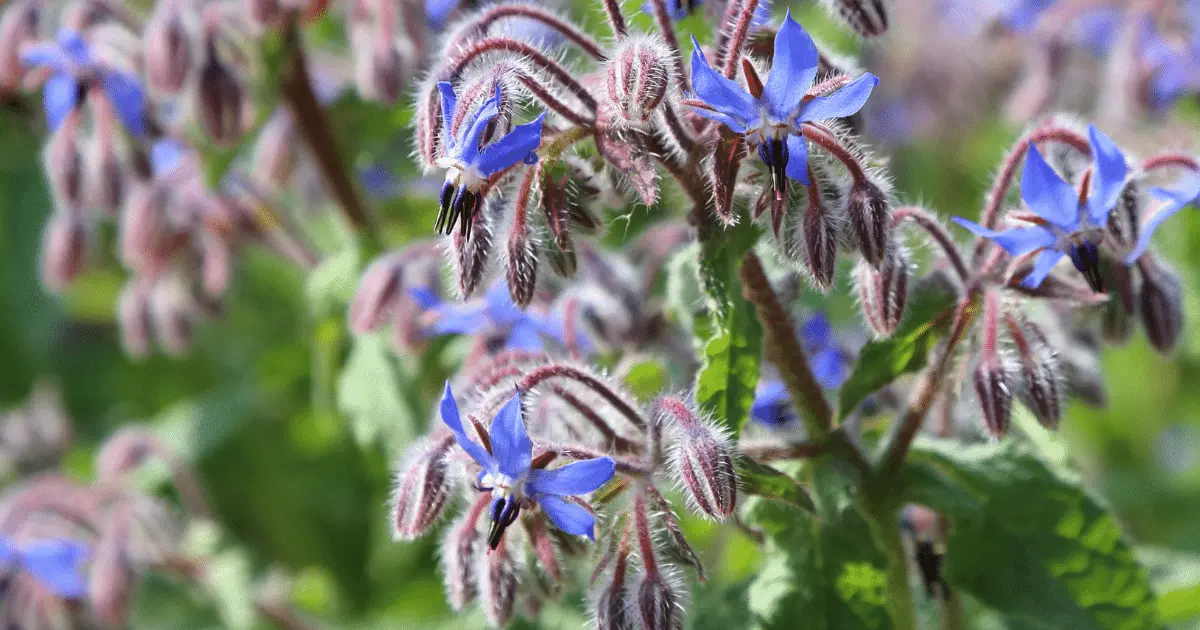
Borage is one of the most common companion plants for almost every vegetable in your garden. It is known as a bioaccumulator, meaning it pulls minerals and micronutrients from deep in the soil up to the surface levels for bell peppers to use.
Benefits: Borage improves mineral nutrients, repel pests, and attracts beneficial insects.
How To Plant: Plant borage in the corners and row ends of pepper beds.
12. Peas
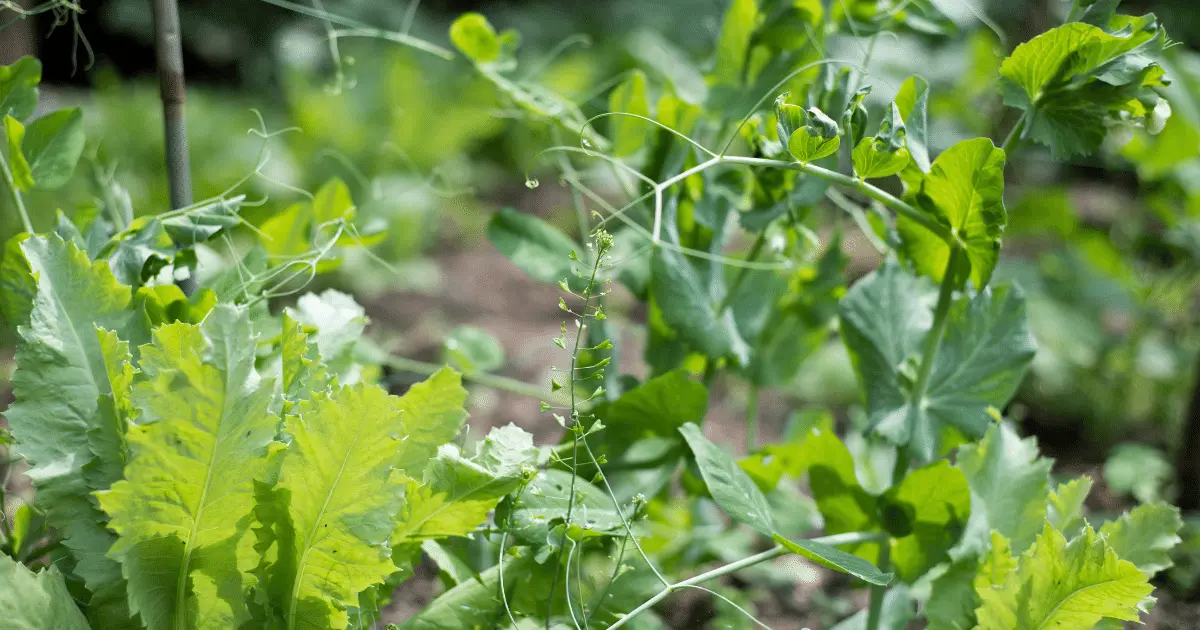
Peas make an excellent bell pepper companion plant because they make atmospheric nitrogen available to nearby plants. Along with that, peas also require similar growing conditions as bell pepper plants.
Benefits: Peas fix nitrogen in the soil.
How To Plant: Plant peas in a row on the northern side of bell pepper plants with at least 12″ of space between them. Doing this enables you to trellis the peas properly without risking shading out your pepper plants.
13. Oregano

Oregano is a spicy, fragrant herb that makes a perfect ground cover and can be used as a bordering ornament for your garden. Due to its shorter stature, oregano grows well around peppers without competing for space and covers bare soil.
Benefits: Oregano repels pests and attracts lacewings.
How To Plant: Plant oregano around the margins of your peppers. Leave a space between 8 to 10″ between both crops to allow oregano to spread.
14. Scallions
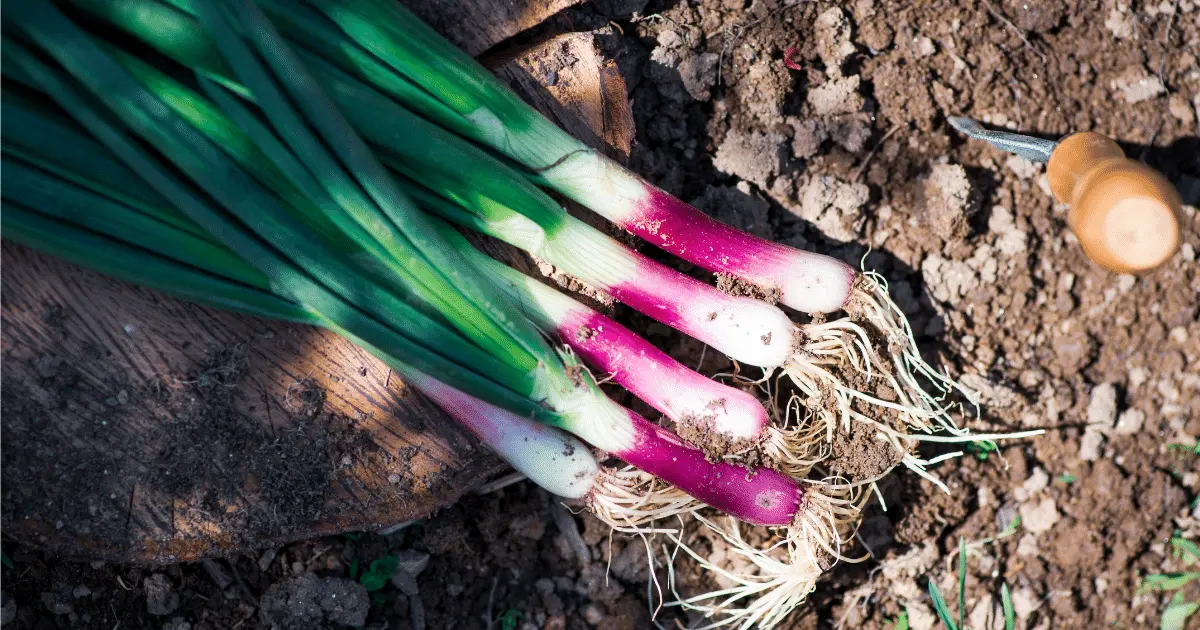
Scallions are a variety of young onions that are quick and easy to grow in the garden. They quickly mature and can be tucked anywhere in your bell pepper plant.
Benefits: Scallions repel pests and don’t pose a risk of competing with your plants for nutrients.
How To Plant: Plant scallions in seed trays in clumps of 3-5 seeds or the garden after you transplant our bell pepper plants. Ensure you leave 4-6″ space between both plants.
15. Cilantro

Cilantro is an ideal companion plant for bell pepper as it can attract beneficial pollinators. Although the leaves have a pest-repelling aroma, they can become compatible with peppers once it bolt and flowers.
Benefits: The white blossoms of cilantro are magnets for pollinators and beneficial insects. They also help to repel pests, attract predator insects and boost pollination.
How To Plant: Cilantro does great in partial shade between a row of tomatoes and a row of peppers. Therefore, plant cilantro around your bell pepper plants.
16. Dill

Dill has a strong aroma to repel pests of all kinds from camping out. Dill attracts beneficial predator insects and pollinators from near and far.
Benefits: Dill improves the vigor and growth of almost any crop they are paired with.
How To Plant: Tuck dill anywhere in your pepper plant with at least 6″ of space.
17. Rosemary

Rosemary is widely used in culinary and medicinal applications. Not only does rosemary work well in the garden with bell peppers, but they can also be paired together on a dinner plate.
Benefits: Rosemary masks bell peppers’ scent and repel pests.
How To Plant: Avoid planting rosemary directly in your annual vegetable beds as it can grow tall and bushy and shade out your crops. Instead, grow it in border beds within a few feet of your pepper patch.
18. Sweet Alyssum
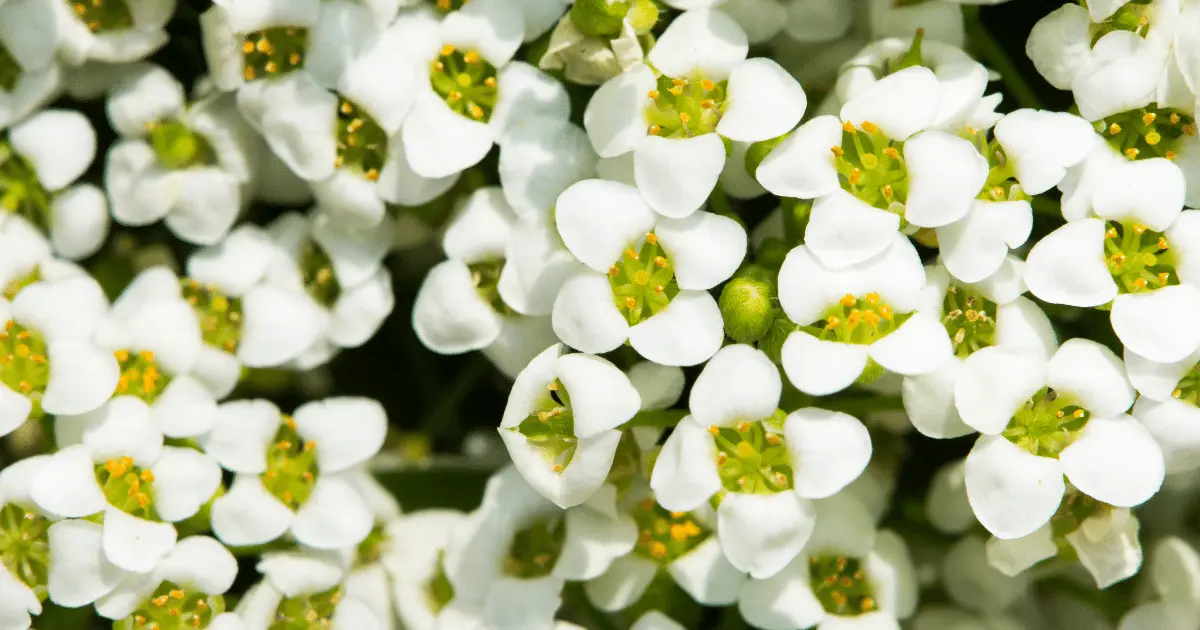
Sweet alyssums are beautiful, hardy plants that produce a lot of flowers. It provides a beautiful, low-growing carpet of dark green foliage and bright white flowers that helps to bring in pollinators and parasitic and predatory insects to boost your natural pest control. The flowers prevent aphid infestation and, at the same time, help suppress weeds beneath your pepper plants.
Benefits: Sweet alyssum attracts pollinators, creates a habitat for beneficial insects, and suppresses weeds.
How To Plant: Sweet alyssum is not aggressive or invasive, so you can plant it along pepper plant row and scatter the seeds as a protective barrier around veggie beds.
19. Sunflowers
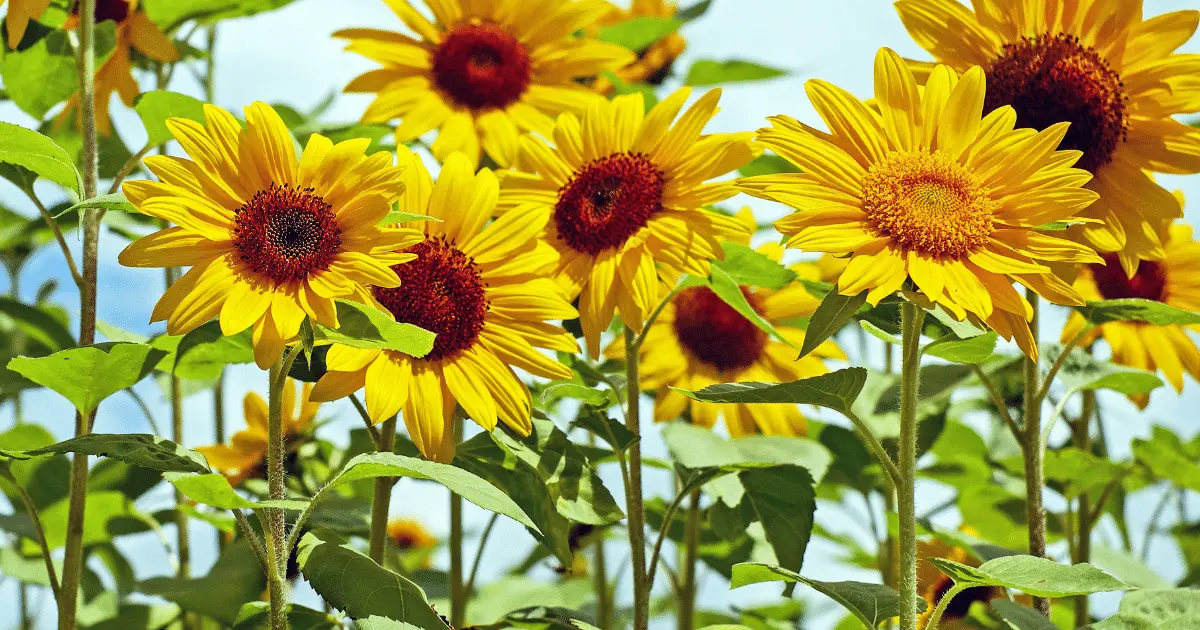
Sunflowers are a must-have on the list of pepper companion plants. When sunflowers bloom, they produce tons of pollen extrafloral nectar (EFN) from glands on their leaf undersides.
This EFN is a sweet reward for beneficial insects in exchange for managing pests. At the same time, sunflowers attract all the bees you’ll need for pepper pollination.
Benefits: Sunflowers feed predatory insects, attract pollinators and protect bell peppers from sun-scald.
How To Plant: Plant sunflowers 3-4 feet away from peppers on the north-facing side. They can be planted in late spring when the weather has settled around the time you transplant peppers.
20. Cosmos
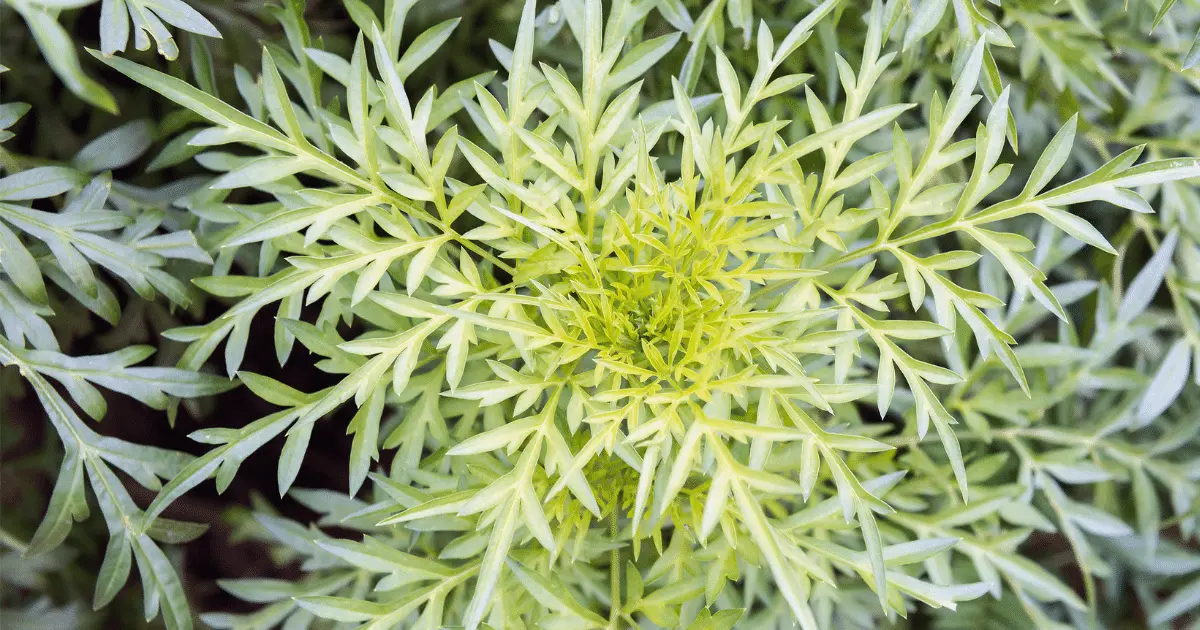
Cosmos are one of the easiest flowers. They are excellent bell pepper companion plants because they bloom throughout the season bringing bees and predatory insects to your pepper patch. Cosmos can also increase pepper pollination, which means greater quantity and size of fruits.
Benefits: Cosmos attracts beneficial insects and pollinators.
How To Plant: Cosmos can grow up to 6 feet tall and 3 feet wide, so keep them out of your pepper beds. Instead, seed them in clump plantings nearby.
21. Yarrow
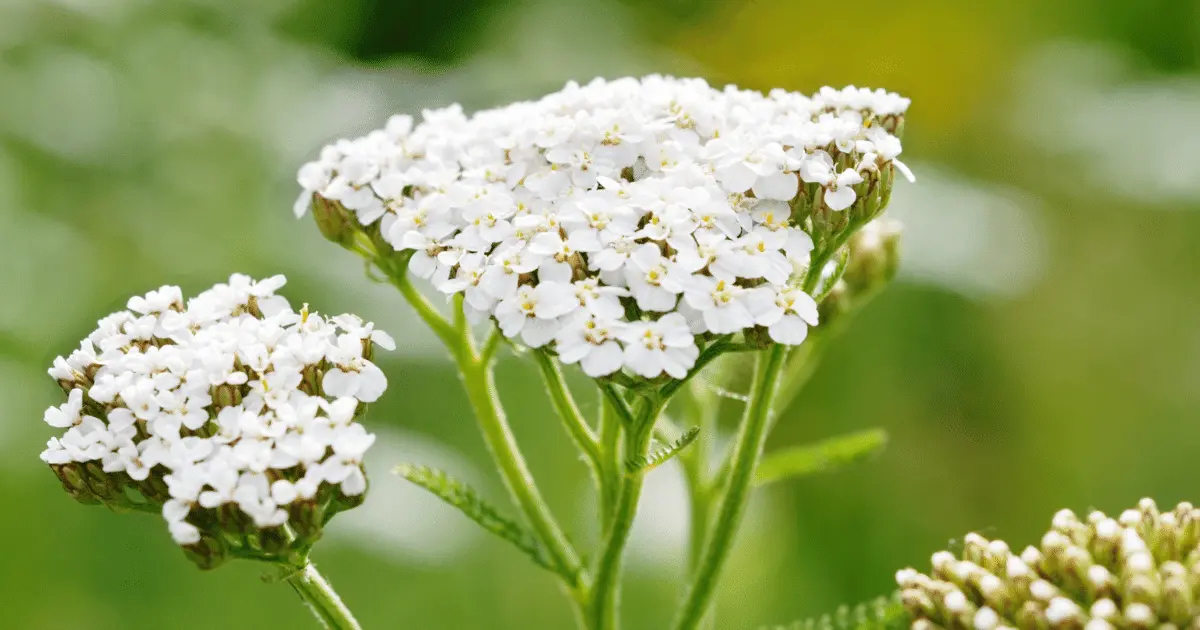
Yarrow is an easy flowering plant known for attracting ladybugs and other beneficial insects. This native wildflower has a sweet honey-like smell, white umbel blossoms, and fern-like foliage that can help pollinate your pepper flower and feast on aphids.
Yarrow’s aroma and nectar are irresistible to beneficial braconid wasps, ground beetles, damsels, and syrphid flies. All these predators help to keep aphids, caterpillars, and other pests in check.
Benefits: Yarrow attracts beneficial insects and pollinators.
How To Plant: Yarrow can grow in a large bush and do well in poor soil. In that case, plant it on the row ends or in border beds a few feet away so predators can hop between yarrow flowers and your pepper plants.
22. Petunias
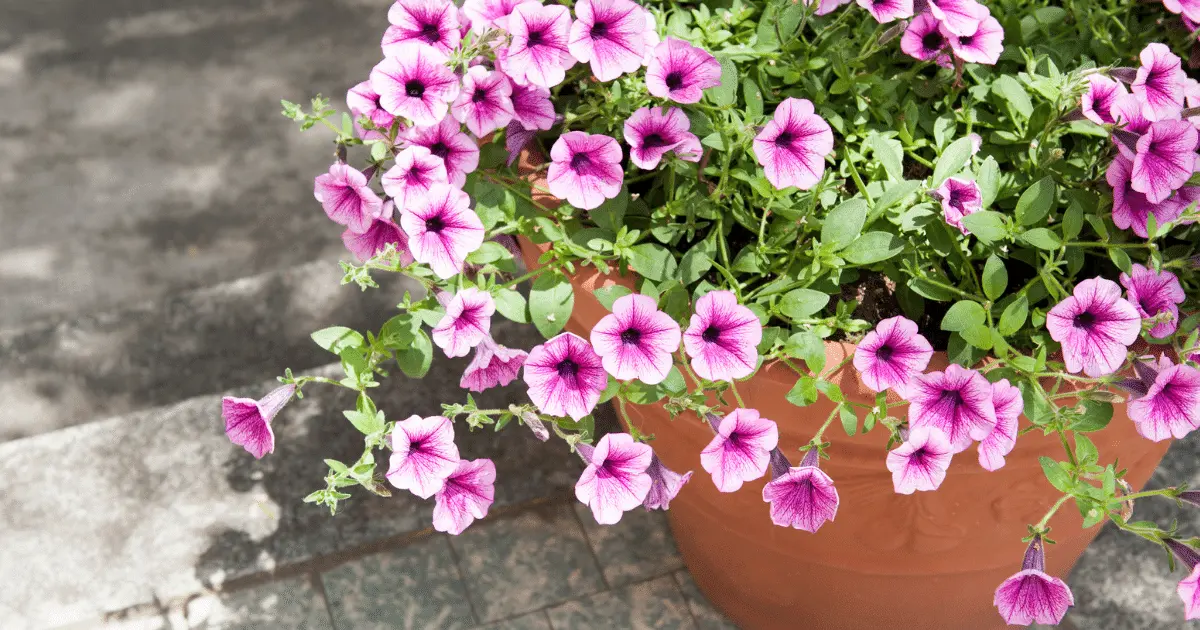
This ornamental plant comes in a wide range of colors that bloom in trumpet-shaped flowers throughout the summer. Petunias are beautiful decorative flowers that may help distract certain pests, including hornworms, leafhoppers, and aphids.
Benefits: Petunias repel pests.
How To Plant: Transplant petunias in the spring in ornamental garden beds, hanging baskets, or planters near your bell pepper plant.
23. Nasturtiums
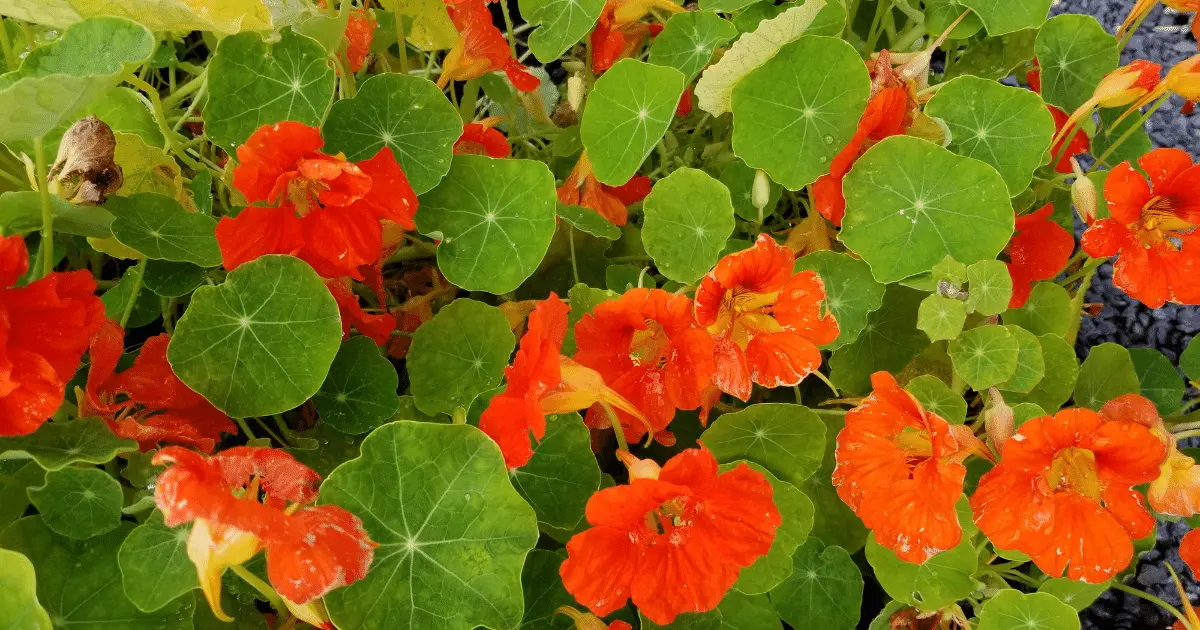
Nasturtiums are beautiful flowers commonly grown as trap crops in the garden with the added appeal of their cheery colors. The flower bloom is slightly spicy, making them a deterrent for pests but flavorful as an edible garnish.
Benefits: Nasturtiums act as a trap crop and attract beneficial insects.
How To Plant: Nasturtiums can get up to 10 feet tall, so plant them directly alongside peppers. Give them a trellis or fence closer to the margin of the garden.
You might want to check out: 25 Nasturtium Companion Plants
24. Wildflower Blends
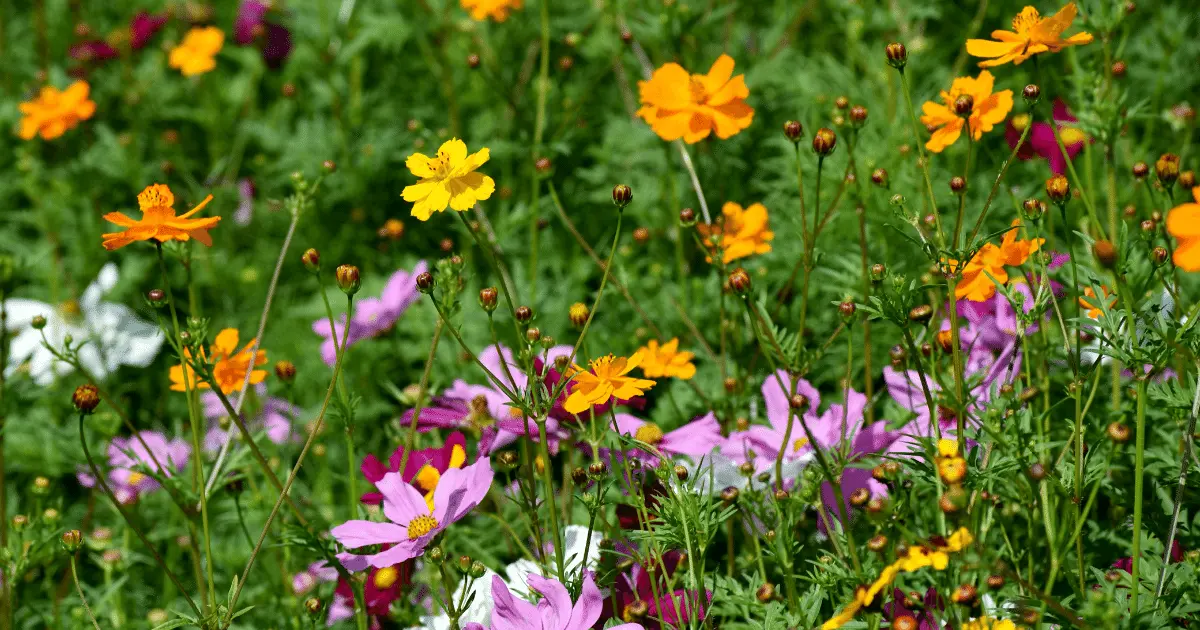
Wildflower blends will provide nectar and habitat for beneficial predators and pollinators that will boost the ecological resilience of your pepper plants.
Benefits: Wildflowers attract predatory insects and pollinators to improve pepper yields.
How To Plant: Plant wildflower blends a few yards away from pepper beds.
25. Hot Peppers

Bell peppers and hot peppers are in the same nightshade family, requiring the same fertility, sunlight, and soil. There are several varieties of hot peppers; the one you choose to plant with bell peppers should depend on the spice level of the pepper you prefer.
Benefits: Bell peppers maximize yields and diversity.
How To Plant: Plant hot peppers 12-18″ away from your bell pepper plants, and they can be planted indoors or transplanted in the garden simultaneously.
26. Carrots
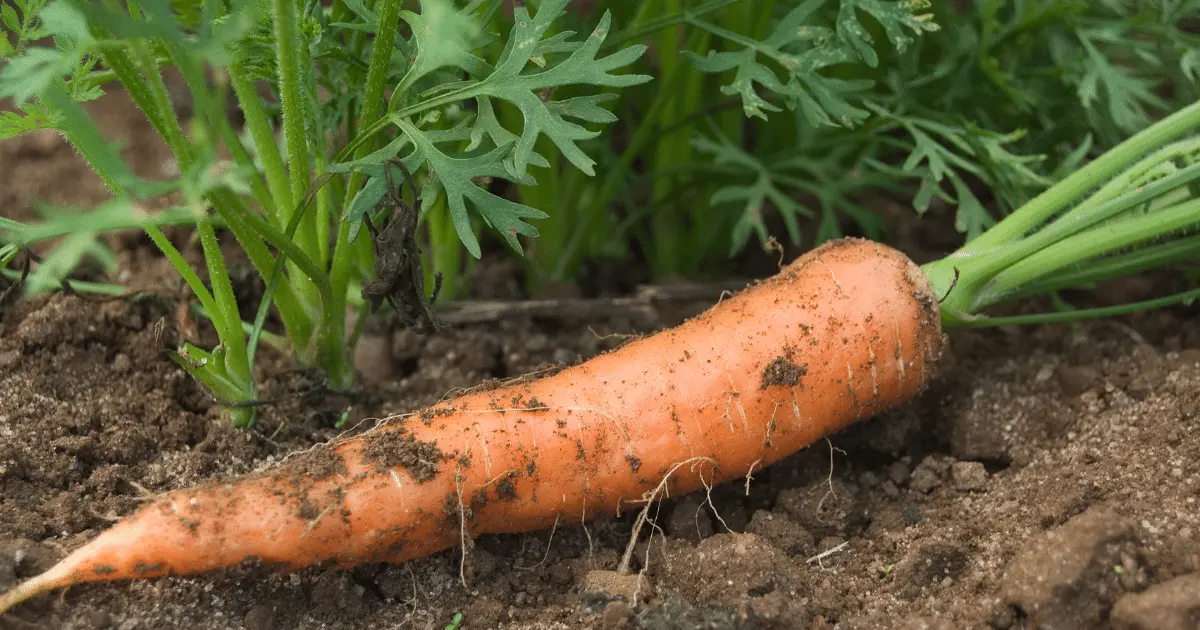
Carrots are excellent bell pepper companion plants because they do not compete for nutrients. Carrots take the same time as peppers to mature, which means you can pull out your carrots at the same time peppers start producing mature fruits.
Benefits: Carrots loosen soil, maximize space, and distract pests.
How To Plant: Plant carrots at the same time as bell peppers. Give them about 6″ from the base of bell pepper plants, and ensure you provide ample irrigation.
27. Lettuce

No matter the variety of lettuce you plant, they grow low to the ground in heads of flavorful leaves. They do well in the dappled shade and do well planted under pepper bushes in the heat of summer. Moreover, lettuce does not provide many benefits, but they make a great companion plant because it maximizes space.
Benefits: Lettuce utilizes shade, maximizes space, and improves biodiversity.
How To Plant: Seed or transplant lettuce 1-2 weeks after planting peppers.
28. Beans

Beans provide the soil with nitrogen essential for plant growth and do not compete for other nutrients in the ground.
Benefits: Beans free nitrogen fertilizer.
How To Plant: Beans can be planted at the time of bell pepper planting. Provide 4-6″ space between each bean plant and 8-12″ from the bell pepper plant.
29. Phacelia

Phacelia and bell peppers are a perfect pair. The fern-like lacey foliage and curled purple blossoms of phacelia are beautiful and irresistible to beneficial insects.
Benefits: Phacelia improves pepper pollination and yield.
How To Plant: Plant phacelia in its own patch near the bell pepper plant.
30. Calendula
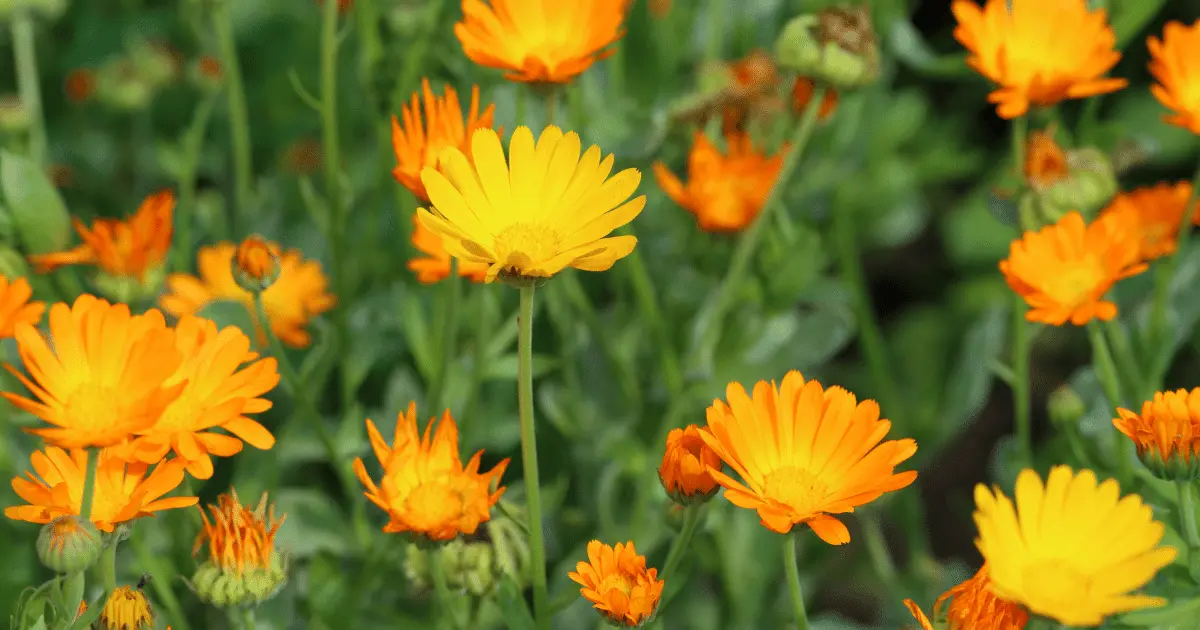
Calendula is known for its resin-rich flowers that have a pest-repelling aroma. Calendula can be very useful for keeping tomato hornworms, nematodes, thrips, and beetles off your peppers.
Benefits: Calendula repels pests and attracts beneficial insects.
How To Plant: Interplant calendula every row end and bed corner around your bell pepper plant for extra pest protection.
Worst Bell Pepper Companion Plants
While the above plants are excellent companions for your bell pepper plant, other plants can harm your bell pepper crops. These plants should be planted in separate parts of the garden away from your bell pepper plant.
1. Fennel
Fennel will stunt the growth of bell pepper plants due to their allelopathic properties.
2. Strawberries
Strawberries can reduce the vigor of bell pepper plants.
3. Potatoes
Bell peppers and potatoes are from the same family, which can attract the same pests.
4. Corn
Corn will overshadow bell pepper plants and reduce their yields.
